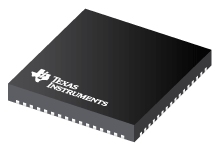"First let me start with my time lapse, I had not been in touch to you all since past 2 years now finally I have started again posting and will try continue. I stopped earlier posting as had been carried away with my Masters. I have been using TI CC3200 MCU since I could get hands upon the Lauchpad/Dev Boards in India (I had to get them from UK with help of a relative). Also my Thesis of Masters has been on IOT with implementation on TI-CC3200 MCUs cluster"
"This product has been changing, improved upon so much that even TI could not keep up with documentation, I will try and help any one who is interested with this MCUs. In my Upcoming Posts I will have a step by step for each of this MCUs for NOOB and Pros"
"This product has been changing, improved upon so much that even TI could not keep up with documentation, I will try and help any one who is interested with this MCUs. In my Upcoming Posts I will have a step by step for each of this MCUs for NOOB and Pros"
The TI-CC3200
SimpleLink™ Wi-Fi® and Internet-of-Things solution, a Single-Chip Wireless MCU. http://www.ti.com/product/CC3200
This MCU was launched back in first quater of 2014 and many revised version have been released since then (current Rev. F). Soon this single chip MCU was the chip for IOT, voted chip of the year 2014 and 15. this series of MCU are also called as 1st generation of MCUs, TI, realizing upon its potential has been constantly and rapidly creating revisions of CC3200 and Have now released the 2nd generation of MCUs CC3220.
Features
- CC3200 SimpleLink Wi-Fi—Consists of Applications Microcontroller, Wi-Fi Network Processor, and Power-Management Subsystems
- Wi-Fi CERTIFIED™ Chip
- Applications Microcontroller Subsystem ARM® Cortex®-M4 Core at 80 MHz
The TI-CC3220
SimpleLink™ Wi-Fi® and Internet-of-Things, Single-Chip Wireless MCU Solution (CC3220R,S,SF)
Also called as 2nd Generation of MCU lauched by TI days before in Jan 2017.
http://www.ti.com/product/CC3220
Features
Also called as 2nd Generation of MCU lauched by TI days before in Jan 2017.
http://www.ti.com/product/CC3220
Features
- CC3220x SimpleLink™ Wi-Fi® Wireless Microcontroller Unit (MCU) System-on-Chip (SoC) is a Single-Chip With Two Separate Execution Environments: a User Application Dedicated ARM® Cortex®-M4 MCU and a Network Processor MCU to Run All Wi-Fi and Internet Logical Layers
- Chip-Level, Wi-Fi Alliance Wi-Fi CERTIFIED
- Applications Microcontroller Subsystem
- ARM Cortex-M4 Core at 80 MHz
New Features :
- IPv6
- Enhanced file system security (supported only by the CC3220S and CC3220SF devices)
- HTTPS support
- RESTful API support
- Asymmetric keys crypto library
- The CC3220x wireless MCU family supports the following modes: station, AP, and Wi-Fi Direct®. The device also supports WPA2 personal and enterprise security. This subsystem includes embedded TCP/IP and TLS/SSL stacks, HTTP server, and multiple Internet protocols. The device supports a variety of Wi-Fi provisioning methods including HTTP based on AP mode, SmartConfig™ Technology, and WPS2.0.
Note: Also There are very affordable Dev/Prototype Boards(as Launch-Pads by Texas Instruments) available for developers as below.
 |
| TI-CC3200 Lauchpad |






